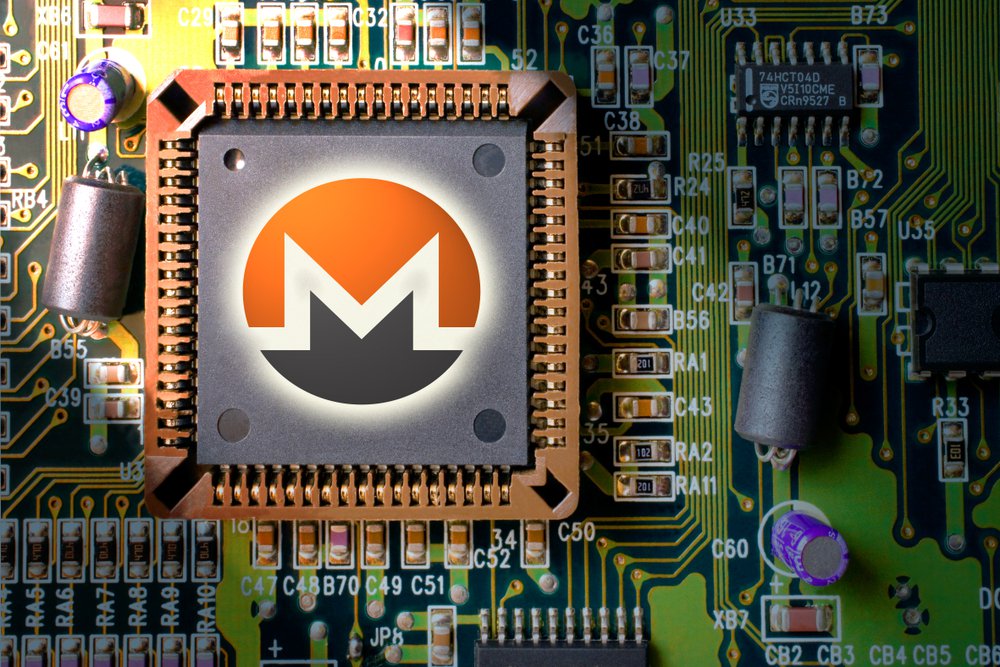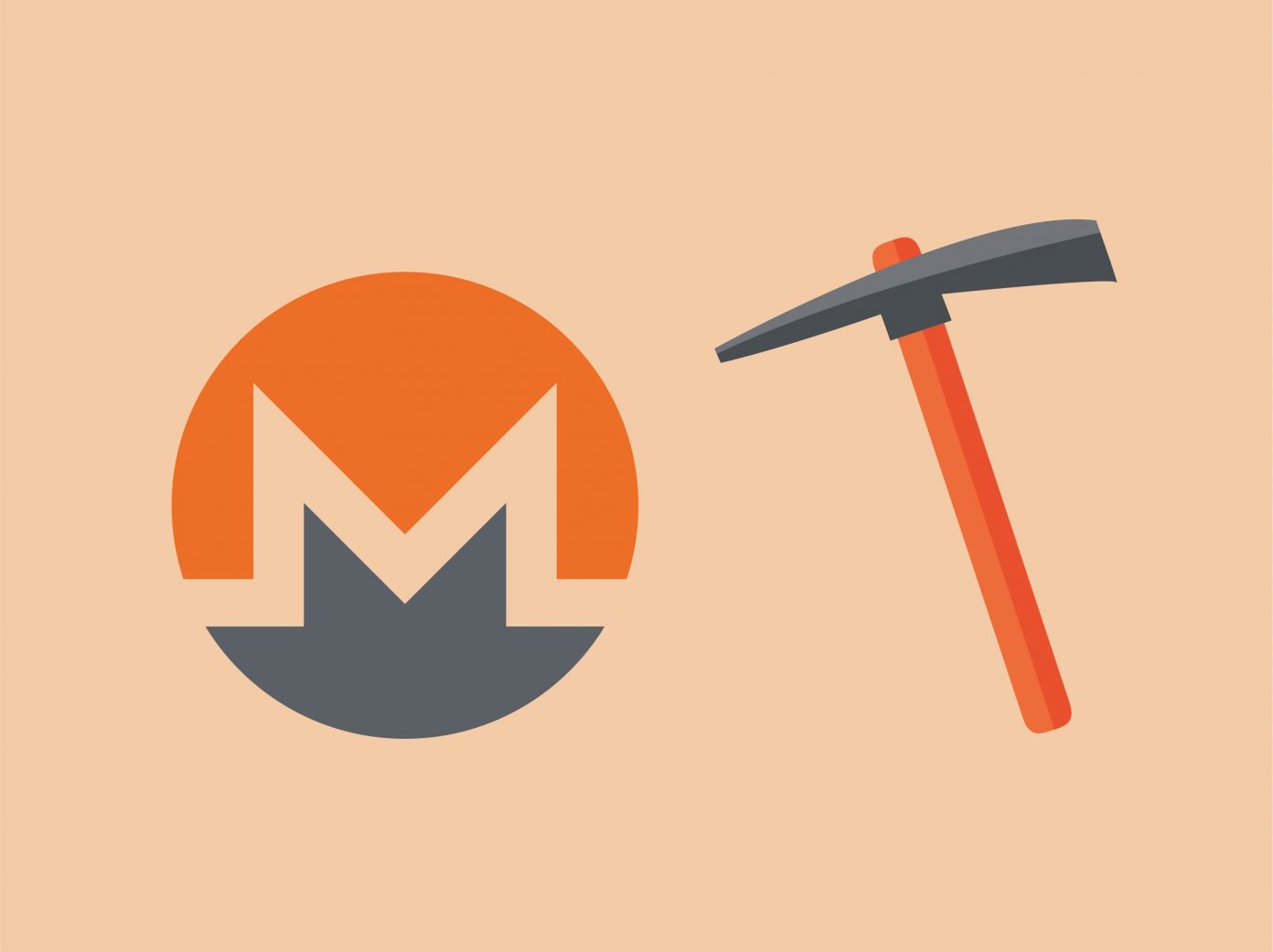
Monero, a leading privacy-centric cryptocurrency, has undergone a hard fork in recent days – producing a new Monero chain in addition to the now renamed ‘Monero Classic’. The fork was initiated to protect Monero against mining centralization, as Bitmain had developed ASIC units purpose-built for mining XMR tokens.
Also Read: “Private Digital Money” Better than State-Issued, Swiss Central Banker Says
Monero Announces Network Upgrade
 On the 28th of March, Monero announced that it had scheduled a major upgrade for April 6th – which would see network undergo a hard fork.
On the 28th of March, Monero announced that it had scheduled a major upgrade for April 6th – which would see network undergo a hard fork.
The official announcement gave two primary outcomes that it intended to achieve through the fork. “First, a PoW tweak to curb any potential threat of ASIC and preserved ASIC resistance, and “Second, the minimum ring size is bumped to 7.” Monero’s expansion in minimum ring size was executed in order to strengthen the privacy afforded by XMR.
It was revealed last month that Bitmain had developed a new ASIC product specifically developed to mine Monero, creating a perceived urgency to fork among developers.
ASIC Resistance Long-Running Concern Among Monero Developers
 In February, Monero published a document outlining its position regarding maintaining ASIC resistance for the cryptocurrency. The post set out Monero’s then “somewhat formal stance” regarding ASIC – stating the developers’ “intention to maintain ASIC resistance by swiftly reacting to any potential threat from ASICs and considering slightly modifying the PoW at every hard fork” due to “any newly developed ASIC […] obtain[ing] a significant majority of the network hashrate and introduc[ing] centralization.”
In February, Monero published a document outlining its position regarding maintaining ASIC resistance for the cryptocurrency. The post set out Monero’s then “somewhat formal stance” regarding ASIC – stating the developers’ “intention to maintain ASIC resistance by swiftly reacting to any potential threat from ASICs and considering slightly modifying the PoW at every hard fork” due to “any newly developed ASIC […] obtain[ing] a significant majority of the network hashrate and introduc[ing] centralization.”
Resisting mining centralization is described as a core value of the Monero project, with Monero stating that XMR “was forked from the Cryptonote reference implementation” that sought to “create a more egalitarian mining network and foster decentralization.” Monero’s developers “concede that ASIC may be inevitable,” however “feel that any transition to an ASIC-dominated network needs to be as egalitarian as possible in order to foster decentralization”.
Monero states that its proof-of-work system “intends to close the gap between CPU and GPU, FPGA, and ASIC mining by using a proof-of-work system that is memory bound over a moderate amount of memory.” Monero argues that this has three major benefits: “First, if mining is decentralized […] it will be very difficult to pressure miners into […] act[ing] as a censor to the Monero blockchain. Second, it will lessen the pressure toward centralization of mining in large data centers,” and “Third, it is quite difficult for government to regulate companies selling general-purpose hardware (as opposed to companies selling specialized hardware).”
Monero Resists Mining Centralization
 Monero argues that “Specialized [mining] hardware will, most likely, only be designed by a few companies,” quoting Peter Todd as stating “There’s only a tiny number of companies in the world that are capable of building performance/cost competitive ASIC, basically the likes of Intel, ASMC, Globalfoundries, etc.” XMR’s developers assert that such “Creates a single point of failure [… that] has the potential to destroy the whole network.” The developers also argue that “Mining, in general, is also prone to the rich-get-richer effect, which ultimately leads to centralization.” ASICs, Monero adds, “accelerate[s] the rich-get-richer effect, because ASIC miners have no competition from” miners with less powerful hardware.
Monero argues that “Specialized [mining] hardware will, most likely, only be designed by a few companies,” quoting Peter Todd as stating “There’s only a tiny number of companies in the world that are capable of building performance/cost competitive ASIC, basically the likes of Intel, ASMC, Globalfoundries, etc.” XMR’s developers assert that such “Creates a single point of failure [… that] has the potential to destroy the whole network.” The developers also argue that “Mining, in general, is also prone to the rich-get-richer effect, which ultimately leads to centralization.” ASICs, Monero adds, “accelerate[s] the rich-get-richer effect, because ASIC miners have no competition from” miners with less powerful hardware.
Monero’s developers concluded that they were willing to “perform an emergency hard fork to curb any potential threat from ASIC if needed” upon discovering that Bitmain had developed ASIC technology for XMR mining. In order to deter the development of future XMR-targeted ASICs units, the developers also proposed modifying Monero’s underlying “PoW hash every scheduled fork, twice a year.”
Monero Classic emerges
Despite the official announcement describing the fork as “a scheduled and consensual network upgrade” and “Thus […] a new coin won’t be created,” the fork saw the emergence of Monero Classic alongside the new Monero chain.
An official statement from Moneroclassic.org has criticized XMR’s decision to pursue ASIC-resistance, arguing that such “creates an alternative and more harmful form of centralization,” as the Monero “developers are saying that they can and will change the consensus rules whenever it suits them.” Monero Classic has pledged “to maintain the original software which follows the original rules.”
ASIC-Resistance Increasingly Becoming Major Debate in Crypto
 The debate surrounding Monero’s decision to pursue ASIC-resistance has become prominent among many other cryptocurrency projects. Last week, Ethereum developer, Piper Merriam, posted an Ethereum Improvement Proposal advocating that the ETH community consider the implementation of a hard fork that would “Modify block mining to be ASIC resistant.”
The debate surrounding Monero’s decision to pursue ASIC-resistance has become prominent among many other cryptocurrency projects. Last week, Ethereum developer, Piper Merriam, posted an Ethereum Improvement Proposal advocating that the ETH community consider the implementation of a hard fork that would “Modify block mining to be ASIC resistant.”
Mr. Merriam stated “According to ‘the internet'[,] there is an ASIC[-]based Ethereum miner on the horizon,” prompting him to ask “Should [Ethereum] hard fork to make ASIC mining harder and to demonstrate a willingness to hard fork any future ASIC[-]based Ethereum mining,” and “What […] changes [should Ethereum] make to implement this increased ASIC resistance.”
Indeed ‘the internet’ was telling the truth, with Bitmain revealing the launch of it’s Antminer E3 for mining Ethereum on the 3rd of April. Despite the existence of the ASIC ETH miner, Vitalik Buterin has opposed Mr. Merriam’s proposed fork, stating “Getting everybody to upgrade is likely to be fairly chaotic and detract from more important things. So, at this point I personally lean quite significantly towards no action […] If the community truly wants this to happen and has a good enough reason we can definitely do that, but for right now it sounds like consensus of the core devs to not do anything at this time.”
New Crypto Projects Seek to Resist ASICs
A growing number of new cryptocurrency projects are also seeking to ensure ASIC resistance, with Overstock CEO, Patrick Byrne recently discussing a fledgling cryptocurrency project Ravencoin that seeks to ensure ASIC resistance.
 Ravencoin’s “X16R whitepaper“, which was authored by Overstock-owned Medici Ventures’ Tron Black and Joel Weight, claims to boast ASIC-resistance through the adopting of an “X16R hashing algorithm” that “consists of 16 hashing algorithms operating in chain.” Ravencoin’s whitepaper claims to achieve ASICs resistance through ”constantly disrupting the ordering of the hashing algorithms,” adding that “This reordering does not make an ASIC impossible to build, but it does require that the ASIC adapts to additional input, which is more easily accomplished by a CPU or GPU.” The whitepaper for Ravencoin, authored by Tron Black and Bitcoin Foundation board member, Bruce Fenton, states that the X16R algorithm is “intended to prevent immediate dominance by mining pools, and future dominance by ASIC mining equipment.”
Ravencoin’s “X16R whitepaper“, which was authored by Overstock-owned Medici Ventures’ Tron Black and Joel Weight, claims to boast ASIC-resistance through the adopting of an “X16R hashing algorithm” that “consists of 16 hashing algorithms operating in chain.” Ravencoin’s whitepaper claims to achieve ASICs resistance through ”constantly disrupting the ordering of the hashing algorithms,” adding that “This reordering does not make an ASIC impossible to build, but it does require that the ASIC adapts to additional input, which is more easily accomplished by a CPU or GPU.” The whitepaper for Ravencoin, authored by Tron Black and Bitcoin Foundation board member, Bruce Fenton, states that the X16R algorithm is “intended to prevent immediate dominance by mining pools, and future dominance by ASIC mining equipment.”
Mr. Byrne claimed “Overstock” has put millions of dollars into teams […] contributing to [Ravencoin]” in a February interview with Business Insider. During Overstock’s Q4 2017 earnings call on the 15th of March 2018, Mr. Byrne also stated that Overstock holds “over 60 million” RVN tokens. With Coinmarketcap currently estimating Ravencoin’s circulating supply to be nearly 800,000,000, it would appear that Overstock currently holds at least 7.5% of the Raven’s total supply – suggesting that projects purporting to be ASIC resistant and the product of a fair launch are not immune to centralizing forces themselves.
Do you think that more cryptocurrencies will initiate forks in order in order to resist ASIC miners? Share your thoughts in the comments section below!
Images courtesy of Shutterstock, Ravencoin
Need to calculate your bitcoin holdings? Check our tools section.
The post ASIC Resistance Increasingly Hot Topic in Crypto as Monero Forks appeared first on Bitcoin News.
Powered by WPeMatico
